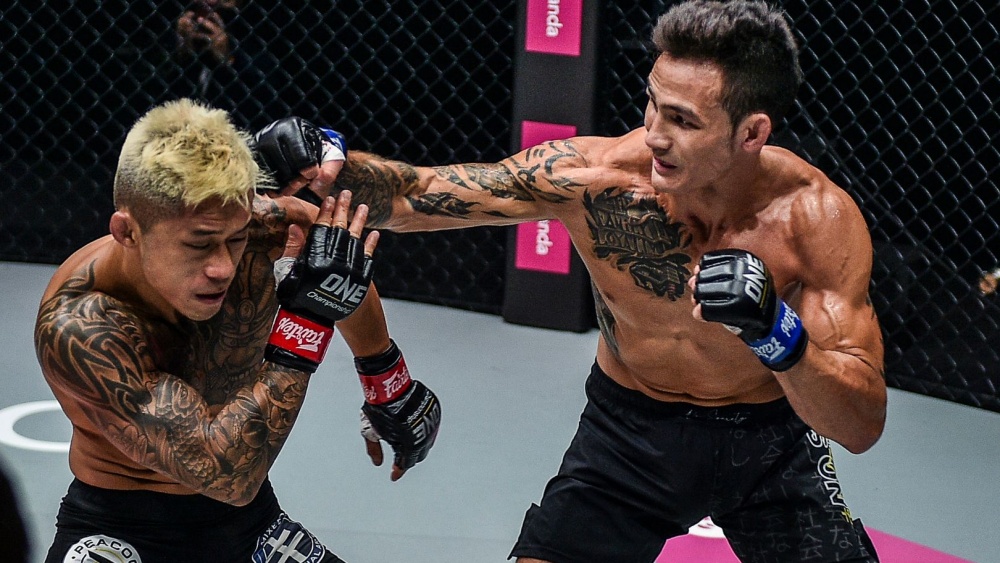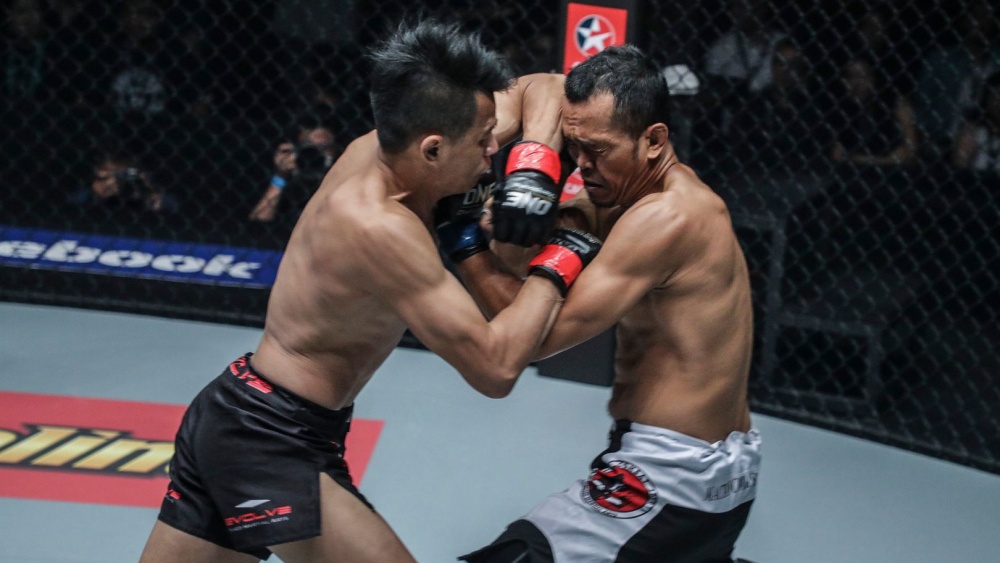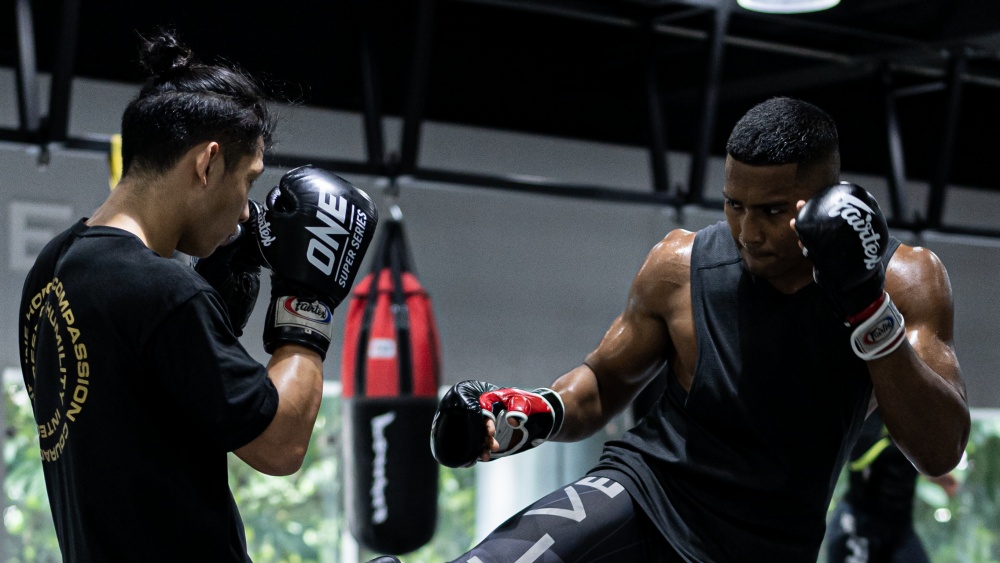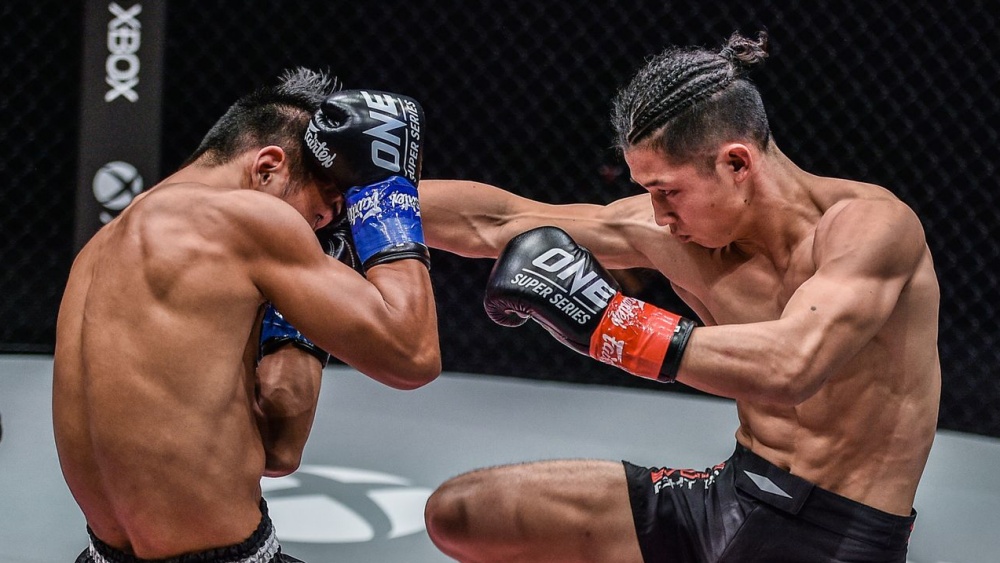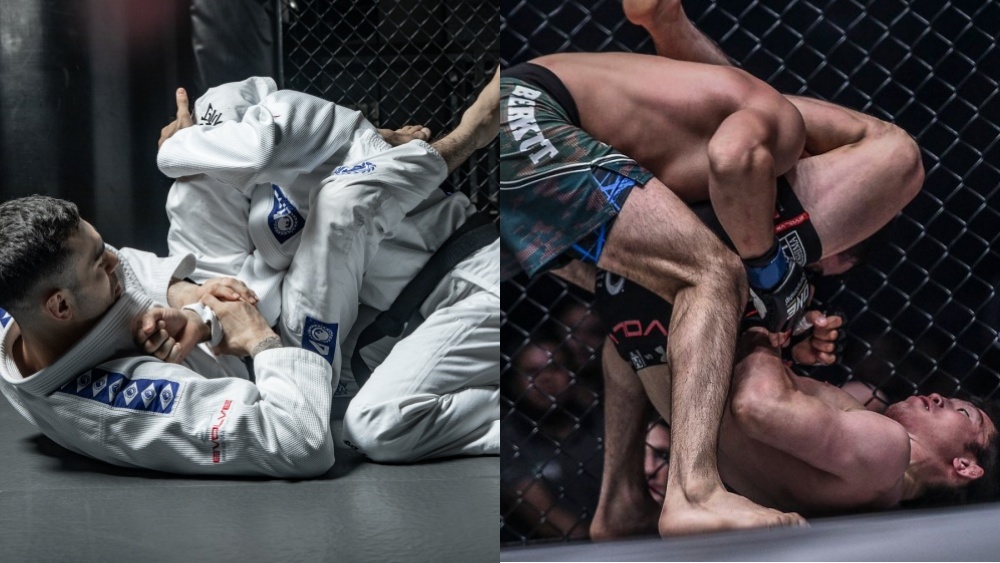Southpaws have become more prominent in recent years in MMA and other combat sports. Many right-handed fighters are adopting a southpaw stance to utilize the southpaw advantage in their fights. The southpaw advantage is essentially the different set of angles and possibilities afforded in a matchup between a southpaw and an orthodox fighter. Today, Evolve Daily is pleased to share a guide on how to use the southpaw advantage in martial arts.
Closed Stance Vs Open Stance
One of the main advantages a southpaw has in martial arts is being familiar with the open stance matchup. Most fighters fight from an orthodox stance and only train to deal with an opponent fighting out of an orthodox stance. This creates a closed stance matchup, which has each fighter’s lead side guarding their centerline from their opponent’s rear side, also called the power side. A closed stance matchup requires you to get past your opponent’s lead side in order to land anything from your rear side.
An open stance matchup is a very different situation; both fighters essentially stand in a mirror image of each other. This creates a situation where both fighters are vulnerable to the rear/power side of their opponent, partially due to the centerline for both fighters being more exposed. Southpaws are used to fighting orthodox fighters and therefore have a deeper understanding of the open stance matchup.
Outside Angle
Striking as a southpaw from an open stance presents many unique setups and opportunities. The main objective for you as a southpaw is to line up your rear side to throw strikes down your opponent’s centerline. To do this, you want to get your lead foot outside of your opponent’s lead foot. This is known as the outside angle and leaves your rear side lined up perfectly with your opponent’s centerline and the gap between their hands. This angle can be used to land devastating power shots with your rear side as seen in the clips below.
Tawanchai Padwork Trainer Gae
Notice how Tawanchai moves his lead foot slightly outside of Trainer Gaes lead foot before throwing a power shot with his left hand. This perfectly demonstrates the outside foot position you want to aim for as a southpaw.
THE GIGA KICK! Giga Chikadze: Kickboxing Edition
Giga Chikadze also uses the outside angle as a southpaw to land his “Giga kick”, a left roundhouse to his opponents liver. Like Tawanchai, he steps his lead leg to the outside of his opponent’s lead leg, then blasts the kick into his opponent’s body. Using a power kick from your left side as a southpaw lets you stay in mid range, keeping you out of range of your opponents punches and counters. Watch below as Giga himself explains the set ups he uses.
Manny Pacquiao Split Entry Punch
Although not an MMA fighter, Manny Pacquiao often used the outside angle to land his famous split entry cross. Pacquiao would time his opponents jab and dash to his opponents outside while landing his cross at the same time. This same technique can work in MMA, although it is rare to see.
Inside Angle
The inside angle for southpaws is a much more advanced concept. The outside angle affords a southpaw fighter much more protection against their opponents strikes, but can be difficult to achieve, as both fighters will aim for it. The inside angle involves you putting your lead foot on the inside of your opponent’s lead foot. If you were to draw a line between your opponent’s feet, and a line between your own feet, an uppercase T should be formed. This puts you, as the southpaw, in position to land power strikes with your lead side on your opponents centerline.
You are also able to land power strikes from your rear side to the right side of your opponent, around their guard. While the inside angle can be powerful, it also comes with inherent risks. The biggest of these is your opponent’s power side; you must momentarily put yourself in line with your opponent’s power side strikes while you take the inside angle. The risk is worth taking if you are able to anticipate this and block or slip their strike, leaving them wide open for whatever you want to throw at them. The MMA fighter to utilize the inside angle the most is Connor “Notorious” McGregor. His signature left hand counter often comes right after he slips his opponent’s right hand while moving to the inside angle. This may seem counter intuitive, due to the dominant nature of the outside angle, but it allows Connor to land his power strikes without having to fight for the outside position. As a southpaw, letting an opponent take the outside angle automatically gives you the inside angle. If you are prepared to deal with their rear punch or kick, you will be able to counter it just like Connor McGregor.
Gervonta Davis Knocks Out Rolly Romero With Devastating Left Hand
Boxers Gervonta Davis and Vasily Lomachenko are two fighters that showcase the effectiveness of the inside angle in landing power punches. Both of these boxers use the inside angle like Connor Mcgregor to slip their opponent’s rear side and come back with their own. Skip to 1:17 of the video to see a slow motion of Gervonta’s lead foot clearly inside of his opponents, followed by him slipping and countering with his own left hand.
Lomachenko Inside Angle
Both the inside and outside angles are powerful tools for any southpaw and learning to use them will increase your southpaw advantage. Coach Shane Fazen of Fight Tips shows these principles in the video.
Southpaw Drills And Combos
Now that we are familiar with the outside and inside angles, here are a few drills to help you build muscle memory as a southpaw. This first one is a basic padwork flow drill to get you used to slipping shots both directions. Here is a basic breakdown of the drill.
- Jab – Slip Outside – Lead Upper – Cross – Lead hook – Pull – Lead Hook – Cross – Slip Inside- Cross – Lead Hook – Rear Overhand
Or for those of you that are familiar with the punch number system:
- 1 – 2 – Slip Outside – 5 – 2 – 3 – Pull – 3 – 2 – Slip Inside – 2 – 3 – 8
Open Stance Attack For MMA!
This second drill can be practiced with a partner or in shadowboxing. The focus of this drill is to close the gap quickly and avoid the “danger zone”, where your opponent can counter with fully extended power strikes. The idea is to throw a jab or cross from southpaw, while stepping towards your lead leg with your rear leg. You then push off your rear leg to launch into a powerful jab cross combination. The initial step with your rear leg lets you creep into distance and launch yourself across the gap before your opponent notices. Here is Coach Trevor Wittman demonstrating it with a student.
This next drill incorporates kicking as well as taking the outside angle. It can be practiced with a partner or in shadowboxing. You start by slipping your opponent’s jab while throwing a left body kick. You then throw a lead teep, stepping and pivoting to the outside afterwards. Finally, you end the combo by lifting your left knee to feint another body kick, only to launch into a left superman punch.
The southpaw advantage is a powerful concept that can take your martial arts game to the next level. Practice these drills and incorporate these ideas into your own training to see your skills increase exponentially!
You may also like:

